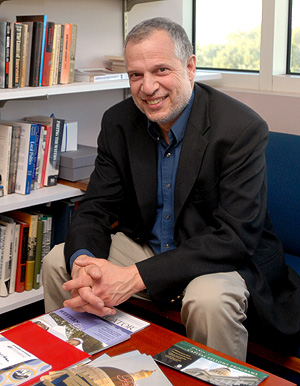Sotomayor's Significance
A Political Scientist's View on First Latina Supreme Court Justice
August 18, 2009
By Raphael J. Sonenshein

Raphael J. Sonenshein
The fuss over the nomination and confirmation of Sonia Sotomayor to the Supreme Court has been overshadowed by the battle over health care reform. But, this was a very important event.
First, Sotomayor becomes the first Hispanic member of the Supreme Court (although there is some debate about Benjamin Cardozo). Second, she is President Barack Obama’s first Supreme Court appointment. She will not change the ideological structure of the court very much, though, since she replaces David Souter, part of the liberal bloc.
What is most significant about this event is what it says about the nation’s politics and the strategies of the two political parties. Strategists in both parties have long known that Hispanic voters are the keys to future party alignments.
President George W. Bush and his political adviser Karl Rove hoped to bring Latino voters into the Republican camp, and in 2004, Bush did rather well with them. Bush most likely intended to make the first Latino appointment to the Supreme Court with Attorney General Alberto Gonzales, but scandals intervened.
The Bush administration, backed by Arizona Senator John McCain, intended to reform immigration laws in a way that would incorporate Latino voters into a new Republican majority. But, the Republican base was so bitterly opposed to changing the status of illegal immigrants that the plan failed in Congress and when McCain ran for president in 2008, he repudiated his own immigration plan. Little by little, Latino voters moved away from the Republicans, and their votes cost McCain heavily in New Mexico, Colorado, Nevada and Florida.
When Obama won with strong Latino support, he gained the opportunity to make the first Latino Supreme Court appointment.
Sotomayor’s nomination offered a dilemma for Republicans. Do they go with the Bush-Rove model or with the base? Ultimately, most Republican Senators opposed her nomination but, more importantly visibly attacked her for her comment that “a wise Latina” would be valuable as a judge. The message was interpreted by Latino voters as anti-Latino and post-nomination surveys found tiny support for the Republican party among Latino voters. After casting his vote for her, the lone Republican Latino in the Senate, Florida’s Mel Martinez, suddenly announced his resignation from office.
As the health care debate heated up, Republican activists concentrated on ginning up the older white base with charges that the proposed health care plan would serve illegal immigrants. The party is returning to its 1994 model, when along with defeating President Bill Clinton’s health care plan, they saved a California governor — Pete Wilson — with Proposition 187 and won control of Congress.
It worked once, but the strategy also led to a massive mobilization of Latino voters into the Democratic party. Democrats are carefully watching to see if Republicans, much more mobilized right now than Democrats, can find a similar success in the 2010 congressional elections.
That is why the Sotomayor nomination and the health care wars are only warm-ups for the big battle of 2010: immigration reform.
President Obama is likely to introduce a reworked version of the Bush-McCain plan to Congress, which will include a path to citizenship for some undocumented immigrants. This will not be easy for either party, and Democrats have plenty of internal divisions on this issue. Consider that about half of African Americans in California voted for Proposition 187 in 1994. It’s a sign of the sensitivity of the issue that Congressional Democrats are writing their health care bill with provisions to exclude undocumented residents from receiving most benefits under the new plan.
But, the real split will be among Republicans, with business and establishment leaders hoping for reform and the base, militantly opposed. The emotions aroused among grass roots Republicans on immigration make health care look tame. The stakes are high because the debate itself will help Latinos choose their future alignments in a nation that is becoming less white.
Raphael J. Sonenshein is division chair of politics, administration and justice and professor of political science.

